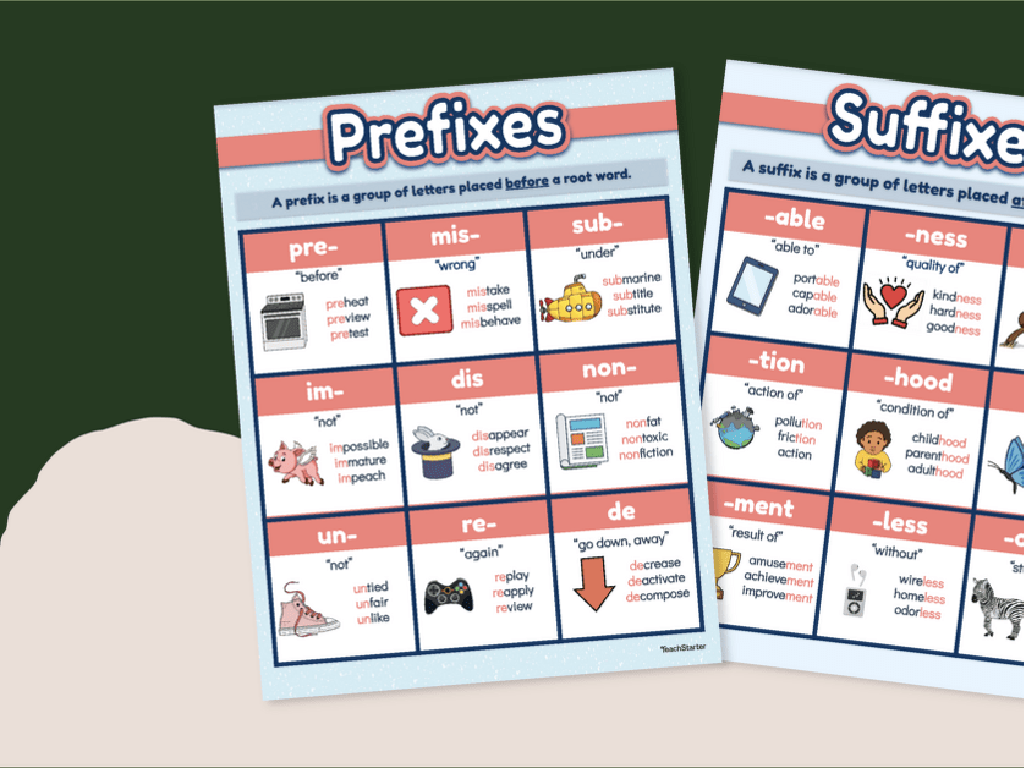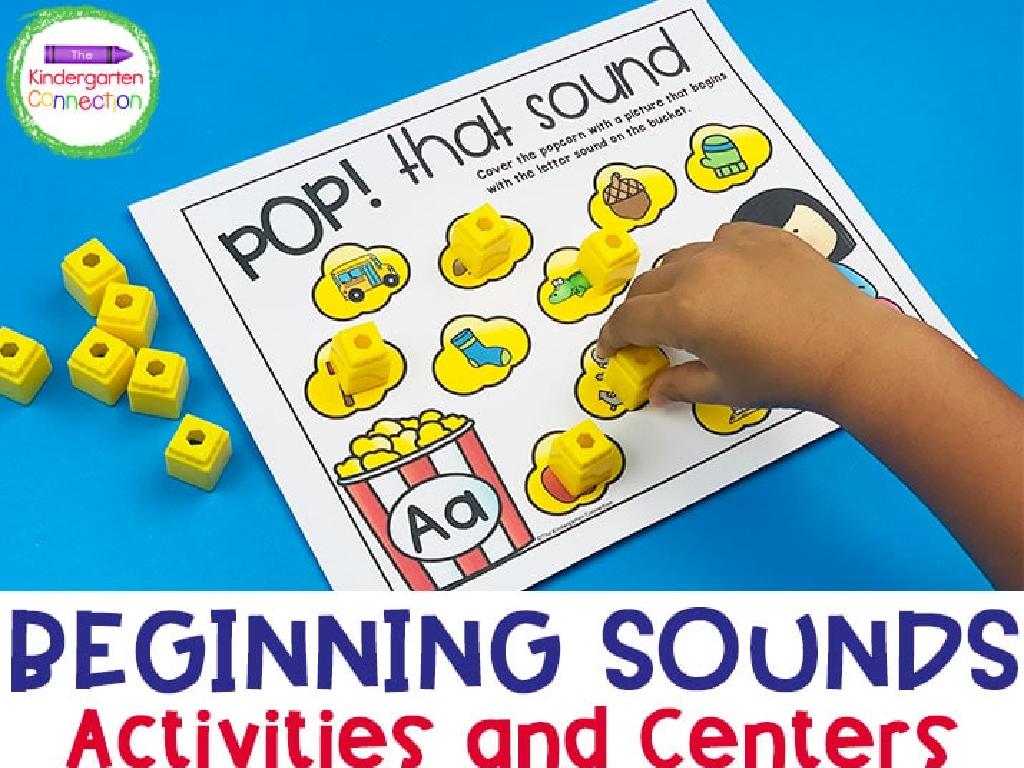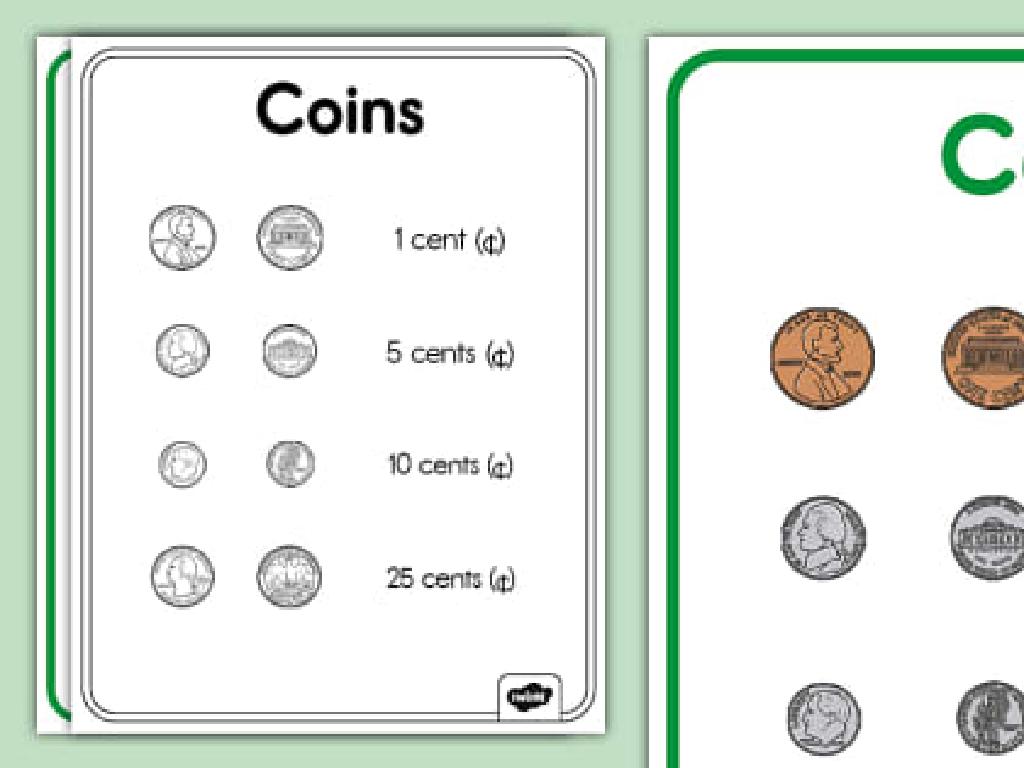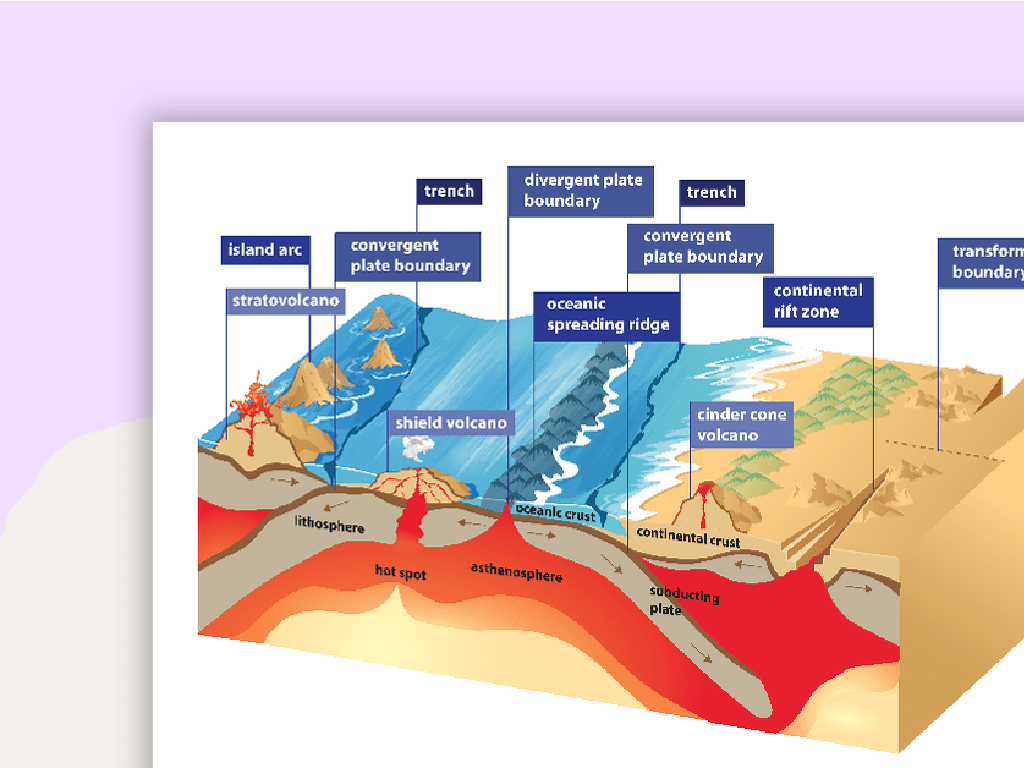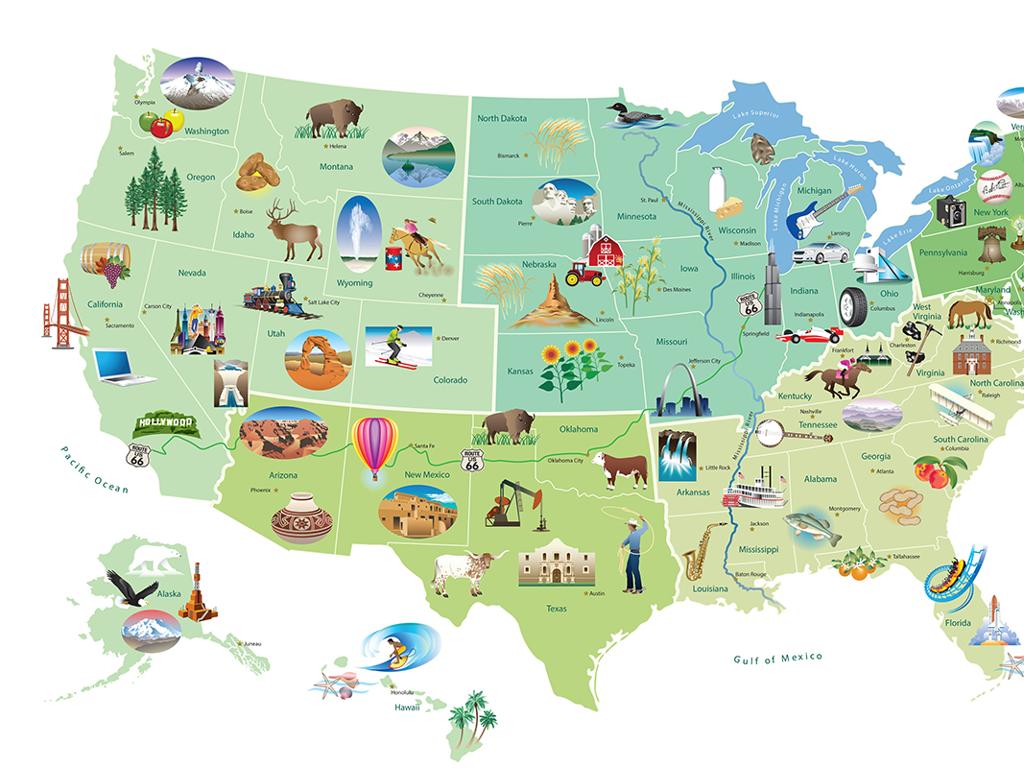Name Countries Of The Caribbean
Subject: Social studies
Grade: Eighth grade
Topic: The Americas: Geography
Please LOG IN to download the presentation. Access is available to registered users only.
View More Content
Exploring the Caribbean
– Introduction to the Caribbean
A tropical paradise, consisting of many islands and countries.
– Geography of the Americas
Located southeast of the Gulf of Mexico and North America, east of Central America, and to the north of South America.
– Caribbean’s global significance
A hub for global trade, tourism, and cultural exchange.
– Cultural and biodiversity
Home to diverse ecosystems and rich cultural heritage.
|
This slide introduces students to the Caribbean as a significant region within the Americas. Emphasize the Caribbean’s unique geographical setting as a group of islands with a strategic location that has historically made it a center for trade and cultural exchange. Highlight its importance in global economics, especially through tourism and its role as a trade route. Discuss the rich cultural diversity and the ecological variety found in the Caribbean, which includes rainforests, mountains, and coral reefs. Encourage students to think about how geography can influence culture and economy. This will set the stage for further discussions on the individual countries within the Caribbean and their roles in the global community.
Exploring the Caribbean Region
– Locate the Caribbean Sea
– Bounded by Mexico and Central America to the west and south west, the Greater Antilles to the north, and the Lesser Antilles to the east.
– Overview of Caribbean countries
– Quick facts about each Caribbean country, including capitals and languages.
– Differentiate islands and mainland
– Compare and contrast the Caribbean islands with the countries on the mainland coast.
– Significance of the Caribbean
|
This slide aims to provide students with a geographical understanding of the Caribbean region. Begin by identifying the Caribbean Sea and discussing its boundaries, emphasizing its location relative to surrounding landmasses. Provide a brief overview of the countries that make up the Caribbean, touching on key facts such as capitals and official languages. Highlight the difference between the islands of the Caribbean and the mainland countries that have coastlines on the Caribbean Sea. Discuss the cultural and economic significance of the Caribbean as a bridge between North and South America and its role in global trade and tourism. Encourage students to explore maps and consider the strategic importance of the Caribbean Sea.
Countries of the Caribbean: Capitals and Culture
– Explore Caribbean countries
A region made up of island and coastal nations, each with its unique capital.
– Learn capitals with techniques
Use mnemonic devices or create a song to help memorize the countries and their capitals.
– Discover meanings behind flags
Flags often symbolize a country’s history, values, or natural features.
– Engage with cultural insights
|
This slide aims to introduce students to the countries of the Caribbean and their capitals. Encourage students to use memorization techniques such as mnemonic devices, which can make learning fun and more effective. Discuss the cultural significance of flags, which often hold deep meaning and represent the identity of a nation. Provide examples of flags and their meanings to give students a deeper understanding of the cultural diversity within the Caribbean. This will not only help students remember the countries and capitals but also appreciate the rich cultural tapestry of the region.
Physical Features of the Caribbean
– Mountains, beaches, and rivers
– The Caribbean is home to ranges like the Blue Mountains and many pristine beaches.
– Caribbean climate significance
– The tropical climate affects the culture, economy, and lifestyle in the Caribbean.
– Biodiversity in the region
– Rich in unique flora and fauna, contributing to the world’s ecosystem.
|
This slide aims to introduce students to the diverse physical geography of the Caribbean, which includes various landforms such as mountains, beaches, and rivers. Highlight the Blue Mountains in Jamaica as an example. Discuss how the tropical climate influences daily life, tourism, and agriculture in the Caribbean. Emphasize the importance of biodiversity, mentioning unique species like the Caribbean monk seal or the blue iguana. Encourage students to think about how these physical features attract tourists and support local economies. This understanding will provide a foundation for further discussions on the environmental challenges and conservation efforts in the Caribbean.
Cultural Diversity in the Caribbean
– Melting pot of cultures
– Influences from Africa, Europe, Asia, and Indigenous peoples
– Languages of the Caribbean
– Spanish, French, English, Dutch, and Creole languages
– Festivals celebrating heritage
– Carnival, Reggae Sumfest, and Crop Over
– Traditions unique to the region
– Music, dance, and storytelling traditions
|
This slide aims to highlight the rich cultural diversity of the Caribbean, which is a result of centuries of colonization, migration, and the blending of African, European, Asian, and Indigenous cultures. Students should understand how these diverse influences are reflected in the languages spoken across the Caribbean islands, with a mix of colonial languages and Creole dialects. Emphasize the importance of festivals like Carnival, which is celebrated in many Caribbean countries, showcasing the vibrant music, dance, and costumes that are a hallmark of the region’s cultural heritage. Discuss how traditions such as storytelling, music, and dance are integral to maintaining the cultural identity of the Caribbean people. Encourage students to research and share more about the unique customs and celebrations found in different Caribbean countries.
Economic Activities in the Caribbean
– Tourism as an economic pillar
– Major source of income, leveraging natural beauty and culture.
– Agriculture: Key crops
– Sugar and bananas dominate, with climate favoring tropical agriculture.
– Trade’s impact on economies
– Trade with global partners vital for importing goods and exporting local products.
– Diversification and challenges
|
This slide aims to educate students on the primary economic activities that drive the Caribbean economies. Tourism is emphasized as a critical sector, with many islands relying heavily on it due to their attractive beaches, weather, and vibrant cultures. Agriculture is also significant, with sugar and bananas being the most common crops due to the favorable tropical climate. Trade is crucial for these island nations to import necessary goods and to export their local products to the world market. Discuss the importance of economic diversification and the challenges faced by the Caribbean nations, such as natural disasters and market fluctuations. Encourage students to think about how these economic activities are interconnected and the impact they have on the daily lives of Caribbean people.
Political Relations of Caribbean Countries
– Members in international bodies
– e.g., UN, OAS, CARICOM, and OECS
– Historical and modern alliances
– Colonial history to today’s partnerships
– Caribbean’s global political role
– Influence on trade, diplomacy, and culture
– Case studies: CARICOM & OECS
– Regional cooperation in economic policies
|
This slide aims to explore the Caribbean’s political landscape, emphasizing the region’s participation in international organizations such as the United Nations (UN) and the Organization of American States (OAS). Highlight the transformation from colonial ties to present-day alliances, and discuss how these relationships affect global politics, including trade, diplomacy, and cultural exchanges. Focus on the Caribbean Community (CARICOM) and the Organisation of Eastern Caribbean States (OECS) as prime examples of regional political unity and economic cooperation. Encourage students to think about the strategic importance of the Caribbean in international relations and how these small nations collectively influence larger global policies.
Class Activity: Caribbean Exploration
– Interactive map labeling
– Flag matching game
– Share an interesting Caribbean fact
– Each student shares a unique fact about a Caribbean country they found intriguing
– Discuss the cultural diversity
– Explore the mix of indigenous, African, European, and Asian influences
|
This slide outlines a class activity focused on the geography of the Caribbean. The interactive map activity will help students visually identify and label each Caribbean country, enhancing their geographical literacy. The flag matching game is a fun way to familiarize students with the national flags of the Caribbean nations. Encourage students to research and share an interesting fact about the Caribbean to promote engagement and peer learning. Discussing the cultural diversity of the Caribbean will provide a deeper understanding of the region’s history and its global influences. Possible activities: 1) Students can work in pairs to label the countries on the map. 2) Organize a competition for the flag matching game. 3) Create a ‘fact wall’ where students post their interesting facts. 4) Have a group discussion on the cultural diversity, possibly leading to a research project on a specific Caribbean country.

